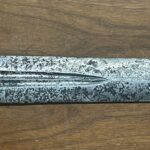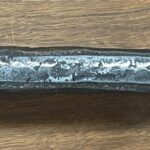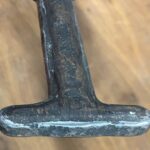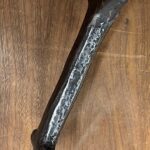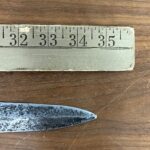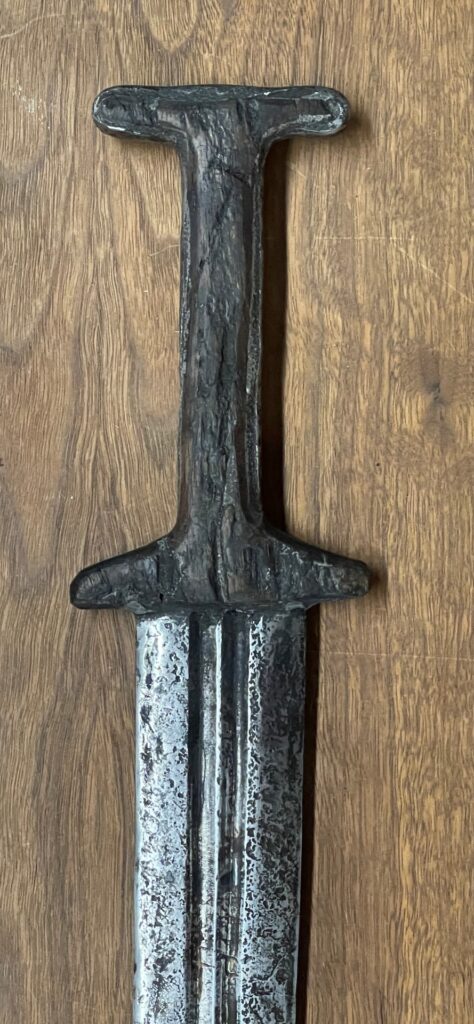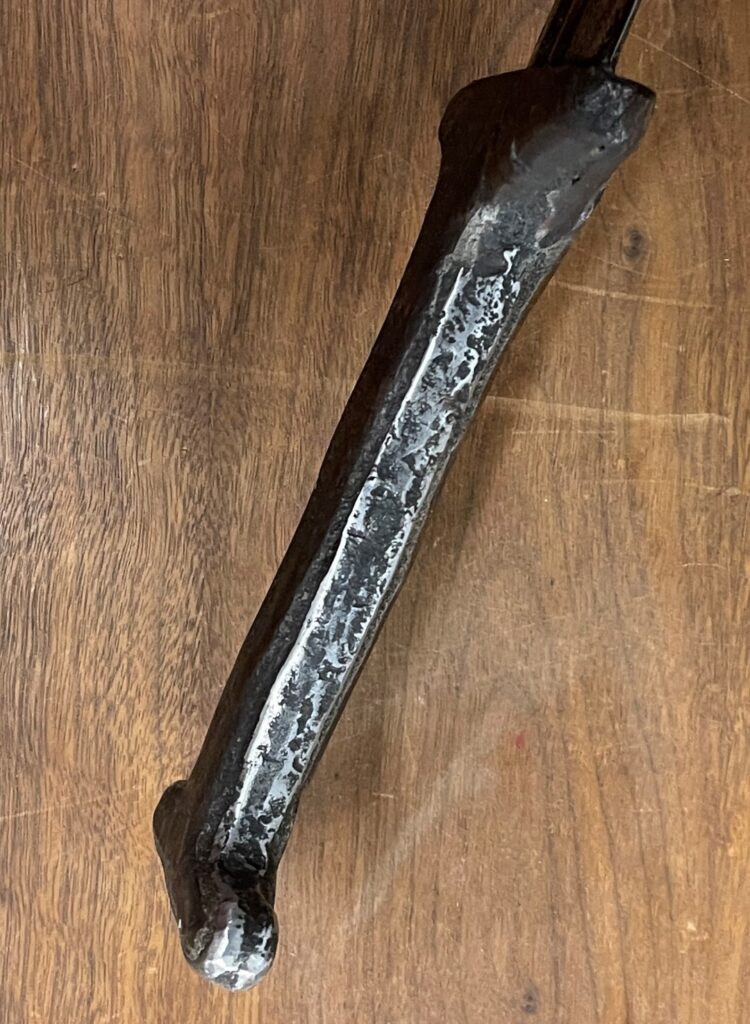1612) RARE MASSIVE SWISS BASILARD SWORD CIRCA 1450 WITH ORIGINAL GRIPS: Incredibly priced at under $3,800 for a quick sale.
Description: Constructed with a stout flattened lozenge section blade with two short fullers side by side, edges on both sides tapering to a point, and holes for rivets on a metal T-shaped hilt with its original wooden grip. Condition: Very good. Length: 35 inches.
Discussion: Basilard is a French or Latin term identifying a dagger with a hilt shaped like a capital I (or,a capital T, see page 318 in my book) developed during the 1300s. Basilards can be found in contemporary literature, books, poems, paintings, effigies, brasses, and other period representations. After circa 1350, the basilard became a favorite of civilians and peasants in England. The basilard was probably the most used dagger circa 1350 in Western and Central Europe. The basilard was believed to have originated in South Germany or North Italy in the late 1200s; this appears in many older publications. However, a discovery at the Datini archives in Prato, Italy, dated 1375 by Claude Blair of the Victorian and Albert Museum, indicates the dagger’s origin is Basel, Switzerland, hence the name Basilard. Basilards varied in length from 12-inch daggers to swords over 36 inches. The masses used the basilard, from peasants to the knightly class. The basilard was part of mainstream Medieval Europe.
A few basilards have survived that were made for the megawealthy. Basilard sheaths are rare. Their sheaths consisted of a metal throat, chape, and middle band. Because leather is organic, few leather sheaths have survived.
The sheath was worn in various ways: 1) On the right side, hanging from the belt, sword belt, or sword hanger. 2) Hanging in the front from the sword belt. 3) Seldom carried on the lower back. The basilard finally evolved into the Swiss (Holbein) dagger in the late 1490s. Some refer to the original variant as the Swiss basilard (see page 320 in my book).
Provenance: From the collection of Gottlob Herbert Bidermann Stuttgart/Aach Germany. Herr Bidermann was one of Europe’s largest collectors of Arms and Armor. He wrote several books on the subject of Medieval and Renaissance Arms and Armor and was appointed court expert on Medieval/ Renaissance Arms and Armor by the German Government (Öffentlich bestellter und vereidigter Sachverständiger für Historische Waffen).
Conclusion: Although not the most elegant of Medieval swords certainly one of the rarest and highly prized by collectors. It is priced to sell for under $4K, a lot less than you expect!!!*




